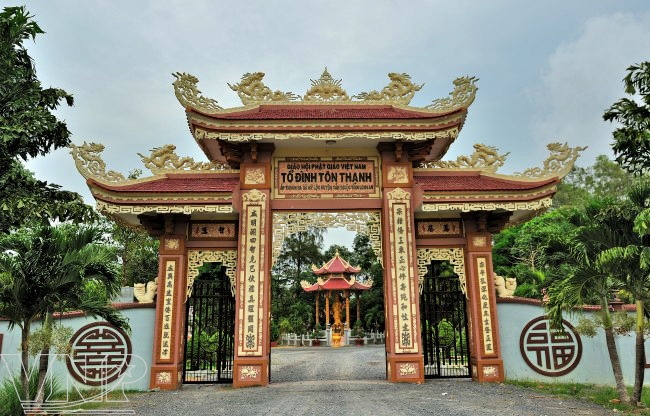 Ton Thanh Pagoda is the oldest one in Long An Province. 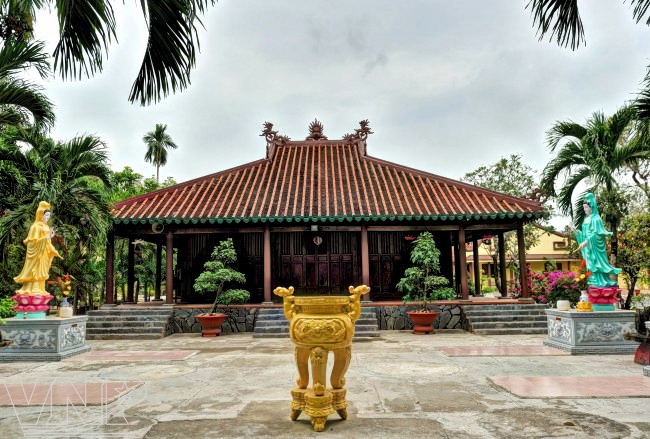 According to “Dai Nam Nhat Thong Chi” (Essays on the United Great Vietnam) Ton Thanh Pagoda was the most famous one in Gia Dinh Area (in the past).  Despite being restored several times, Ton Thanh Pagoda built in 1808 retains its 19th century architectual style. 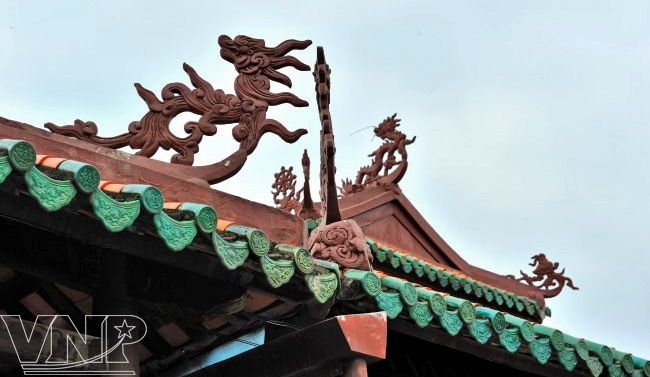 Beautiful patterns of the pagoda’s roof.  Visiting the pagoda, tourists have a chance to learn about the ancient architectural work and its historical value. |
At present, the relics of poet Nguyen Dinh Chieu and the “Van te nghia si Can Giuoc” are still preserved at the precinct of the pagoda. They are two steles, one about poet Nguyen Dinh Chieu built in 1973 and the second excerpting “Van te nghia si Can Gioc” built in 1998. In the garden of the pagoda, there are a three-story tower in the shape of hexagon, 4.5m high, of monk Vien Ngo with the highest storey inscribed with scripts “Glory to Buddha Amitabha” and a square three-storey Tower, 3m in height of Buddhist Monk Tac Thanh.
After being restored several times, the pagoda has experienced a lot of changes. It now consists of a complex of a worshiping hall, a sanctum, a preaching house and corridors in the west and the east. Particularly, the pagoda only preserves the old architectural style with a system of four pillars in the main sanctum, several Buddhist statues from the early 19th century, parallels and the most valuable statue of Ksitigarbha Bodhisattva which is 110m high and is made from bronze.
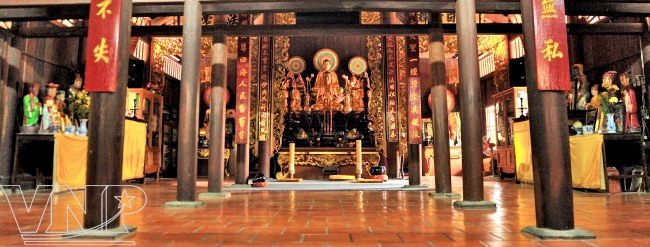 The central chamber of Ton Thanh Pagoda.  The ancient bell in Ton Thanh Pagoda. 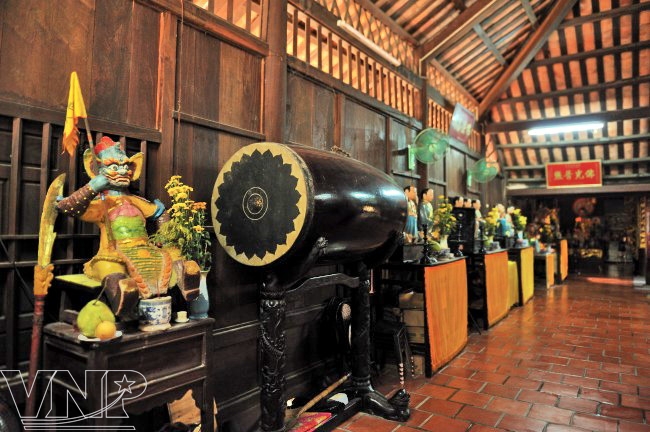 A row of Arhats inside Ton Thanh Pagoda. |
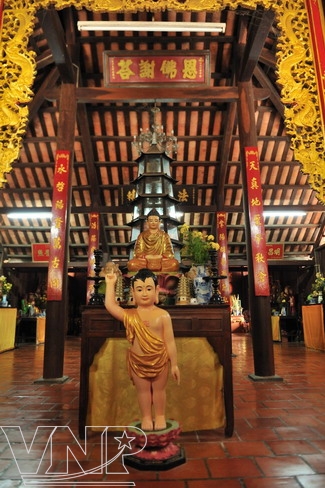 Statue of the Great Buddha at the central chamber. |
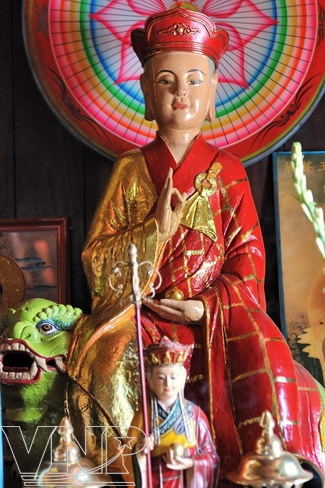 Statue of Ksitigarbha Bodhisattva. |
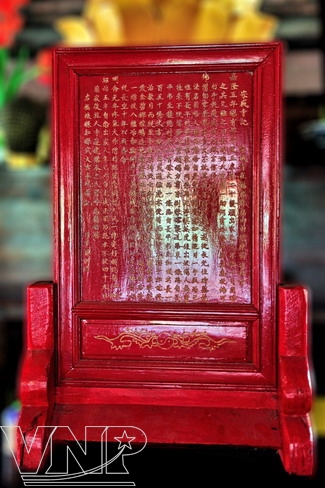 “Van Te nghia si Can Giuoc” (Funeral Oration for the Partisans of Can Giuoc) in Ton Thanh Pagoda. |
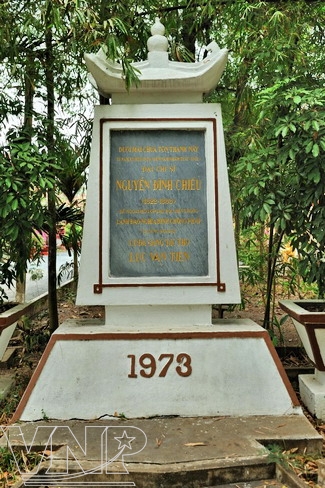 A stele of Nguyen Dinh Chieu in Ton Thanh Pagoda. |
With historical values, Ton Thanh Pagoda has become a destination, attracting a large number of tourists.



